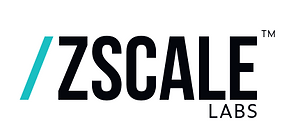
Binding Operations in Hyperdimensional Computing (HDC)
Sep 30
3 min read
1
14
0

Hyperdimensional Computing
Hyperdimensional Computing (HDC) is revolutionizing the field of artificial intelligence by introducing a novel approach to data representation and manipulation. At the heart of HDC lies a set of powerful operations, with binding being one of the most crucial. This article explores the concept of binding operations in HDC and their significance in creating complex, associative representations.
What is Binding in HDC?
Binding is a fundamental operation in HDC that combines two hypervectors to create a new hypervector representing their association. This operation allows HDC systems to encode relationships between concepts, create ordered pairs, and build complex structures from simpler elements.
Key Properties of Binding
Dissimilarity: The resulting hypervector is typically dissimilar to both input vectors, creating a unique representation of their association.
Invertibility: Binding operations are generally invertible, allowing for the recovery of the original components through an unbinding process.
Preservation of Distance: Binding operations maintain the distance relationships between vectors, ensuring that similarity measures remain meaningful.
Distributivity: Binding distributes over other operations like bundling (addition), enabling the creation of complex, structured representations.
Types of Binding Operations
Different HDC frameworks implement binding in various ways, each with its own characteristics:
Element-wise Multiplication: In binary or bipolar vector spaces, binding can be performed through element-wise multiplication. This method is computationally efficient and preserves the dimensionality of the input vectors.
Circular Convolution: Used in models like Holographic Reduced Representations (HRR), circular convolution creates a binding that can be approximately inverted.
Tensor Product: While computationally expensive due to dimensionality expansion, tensor products offer a powerful binding operation that preserves all information from the input vectors.
Permutation-based Binding: Some HDC models use permutation operations in conjunction with element-wise operations to create bindings that are easily invertible and maintain vector dimensionality.
Applications of Binding in HDC
Binding operations enable a wide range of applications in HDC:
Representing Relationships: Binding allows HDC systems to encode relationships between concepts. For example, binding a "SHAPE" vector with a "CIRCLE" vector can represent the concept "SHAPE is CIRCLE."
Creating Structured Data: Complex data structures can be built by binding multiple concepts together. This is particularly useful in natural language processing and knowledge representation tasks.
Encoding Sequences: By combining binding with permutation operations, HDC can represent ordered sequences of events or data points.
Role-Filler Associations: In cognitive modeling, binding is used to associate roles with their fillers, enabling the representation of complex scenarios and situations.
Feature Combination: In machine learning tasks, binding can be used to combine different features or modalities of data into a single, coherent representation.
Advantages of Binding in HDC
The use of binding operations in HDC offers several compelling advantages:
Efficiency: Many binding operations, such as element-wise multiplication, can be performed in parallel, leading to significant speed improvements in certain tasks.
Robustness: The high-dimensional nature of HDC representations makes them resilient to noise and errors, even after binding operations.
Compositionality: Binding allows for the creation of complex representations from simpler components, enabling HDC systems to handle hierarchical and structured information.
Symbolic Manipulation: Binding operations provide a bridge between symbolic and distributed representations, allowing HDC to perform symbolic reasoning tasks.
Interpretability: Unlike some black-box AI models, the results of binding operations in HDC can often be traced and interpreted, providing insights into the system's decision-making process.
Challenges and Future Directions
While binding operations in HDC show great promise, there are still challenges to overcome:
Optimal Dimensionality: Determining the ideal vector dimensionality for different tasks and applications remains an active area of research.
Scalability: As the complexity of tasks increases, managing the computational requirements of binding operations becomes crucial.
Learning Algorithms: Developing efficient learning algorithms that can leverage the power of binding operations is an ongoing challenge in HDC research.
Hardware Implementation: Creating specialized hardware that can efficiently perform binding operations at scale is a key area for future development.
As research in HDC continues to advance, binding operations will play a crucial role in expanding the capabilities of AI systems. By enabling the creation of rich, associative representations, binding operations in HDC are paving the way for more powerful, efficient, and interpretable artificial intelligence.
Citations:
https://www.frontiersin.org/journals/artificial-intelligence/articles/10.3389/frai.2024.1371988/full
#HyperdimensionalComputing #HDC #BindingOperations #ArtificialIntelligence #DistributedRepresentations #SymbolicAI #CognitiveComputing #MachineLearning #NaturalLanguageProcessing #KnowledgeRepresentation #VectorSymbolicArchitecture #AssociativeMemory #RobustAI #CompositionAI #InterpretableAI #ParallelComputing #FeatureCombination #CognitiveModeling #BrainInspiredComputing #FutureOfAI






